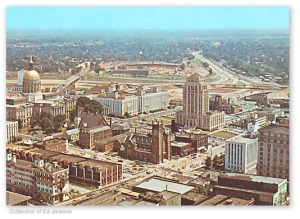Two things from my social feeds this week:
First, James Somers’ “Keepers of the Secrets” in the Village Voice reflects provocatively on the value of archival materials that fall between the cracks of digital search algorithms, accessible only by physical presence. NYPL archivist Thomas Lannon serves as the story’s central figure, displaying both a vast knowledge of the contents of box after box of documents, but also an equanimity about the significance of any one in particular:
That is the paradox of being an archivist. The reason an archivist should know something, Lannon said, is to help others to know it. But it’s not really the archivist’s place to impose his knowledge on anyone else. Indeed, if the field could be said to have a creed, it’s that archivists aren’t there to tell you what’s important. Historically momentous documents are to be left in folders next to the trivial and the mundane — because who’s to say what’s actually mundane or not?
That humility reflects that research in the archives is ideally a symbiosis of archivist and historian. One makes materials accessible, and the other brings contextual knowledge to find meaning in them, relating them to other documents, other narratives, other questions:
Diving into this well is one of the positive side effects of a less-than-detailed finding aid. “The best the finding aids give you is ‘Letters, 1921–1937’,” Syme said. “‘I guess I have to look at every single letter?’ Yeah, you do.” The need to pore through boxes forces you to connect with them. Syme described this as one of the few kinds of formal research left. You can’t google — you have to think about what you want. You have to talk to an archivist, and find the right box, and go through that box.
What I liked best about Somers’s article was the way that, without having to state it directly, he showed the poverty of our present conception of knowledge as mere information. What can be Googled isn’t all that matters.
The information age, unfortunately, has not left archival practices alone. While the volume of paper finding its way to archives after its bureaucratic utility is exhausted has grown, the development of archival best practices for rendering that paper accessible to researchers has purged most qualitative or critical analysis from the work:
A 2005 paper titled “More Progress, Less Process” was a wake-up call to the field. “Truly, much of what passes for arrangement in processing work is really just overzealous housekeeping, writ large…. Pointing out that as much as 80 percent of the archivists’ time was spent “refoldering,” the paper offered shortcuts that, it claimed, would make more collections available without sacrificing much in the way of intellectual accessibility.
“MPLP,” as the paper’s doctrine became known, went on to be the rallying cry of the field, even as it seemed to transform the archivist from an assiduous historian into a corner-cutting technocrat, rushing to get linear feet of record out the door (“linear feet” is an obsession in the world of archives; one standard box of folders is just over one linear foot). Indeed, most archivists got their start because they liked poring over archives. The ethos of MPLP was to read as little of a collection as you possibly could, while still ensuring that you made it usable for research.
As a former practicing historian, I recall a great frustration when my research “productivity” was evaluated by quantitative social scientists whose working assumption was that “data” is standardized and available, awaiting analysis. Maybe not everybody gets this work.
Of course, researchers can do great things make the knowledge in archives accessible in the digital stream of information. My second read to pass along is a great example, the 80s.nyc project by Jeremy Lechtzin and Brandon Liu (described here) to digitize and geocode photos, taken for tax assessment purposes, of virtually every building on every block in New York City in the 1980s. It’s easy to say that the city’s changed since the 1980s; this kind of work, by starting with archives to make information, helps you to see it too.

